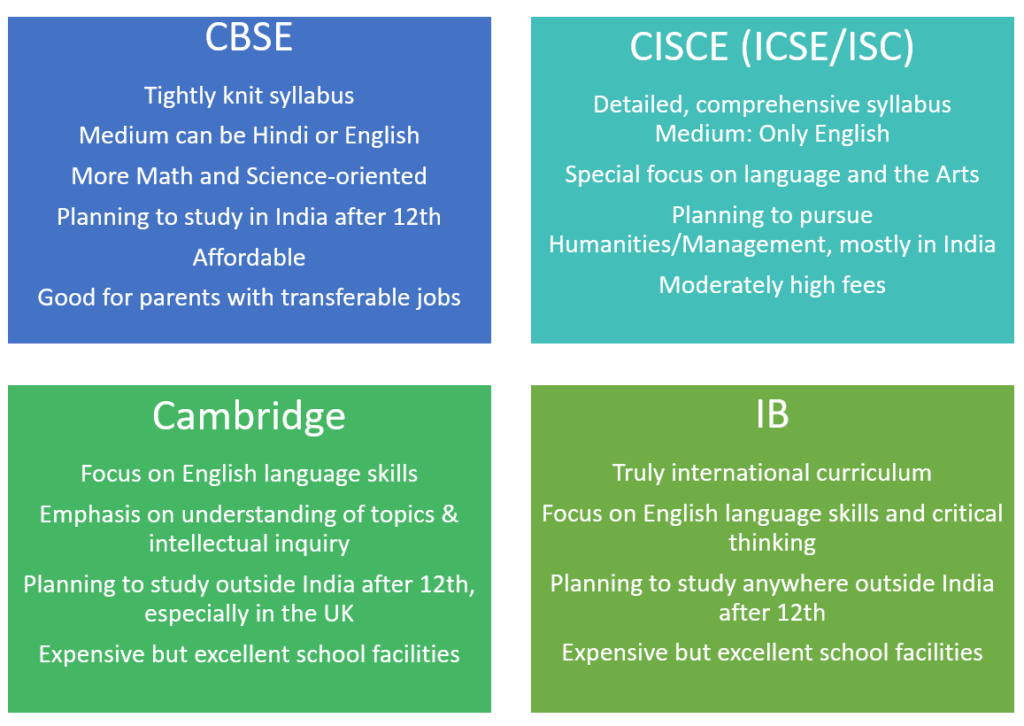When someone sees him for the first time, the most striking feature will have to be his quirky spectacle frame – square on his left eye, and round on the other. Narresh is the co-founder and creative director of Shivan & Narresh, India’s first luxury holiday brand that was launched in Cannes with 100% stitch-free swim line. He has been featured in every major luxury fashion magazine and portal. Whether this was a future he had envisioned years back, when he was preparing for his final school board examinations, is difficult to say. But in a way the genesis of his brand can be traced back to one moment in the corridor of his school, the Modern School, Vasant Vihar, Delhi.
The year was 2003 and board exams at the end of the 12th class were just a few weeks away. Narresh ran to catch up with the then principal, Goldy Malhotra. He told the principal that he was weak in Mathematics, and would like to take up graphic arts instead, if he could, which he was passionate about. Goldy quickly told him that he could take graphic arts as an elective subject, a sixth one instead of the mandatory five subjects he had to do. Provided the Central Board of Secondary Education (CBSE) would concede her application to let him do that.
“The CBSE is very flexible that way. They allowed him to choose the subject of his choice. His performance was extremely good, and he got admission into the National Institute of Fashion Technology,” says Goldy. That is where he met Shivan, who was his classmate, and the rest as they say, is history.
Board exams have always been one of the most stressful, almost painful, aspects in the lives of students and their parents as well. The results are widely seen as making or marring a student’s admission to a good institute of higher learning, if not his general progress in career and life itself. And participating in this exam are 15-18 year olds cutting across Indian geographies, rural-urban divide, rich-poor wall, the social divide complete with caste,class, community, and now, the digital divide. Not for nothing has Prime Minister Narendra Modi often discussed examination preparation techniques and stress management techniques in his very favourite “Mann ki Baat”.
The stress of board exams has led to another kind of stress over the last few years: choosing the Board that conducts the school final exams. The fact that there are many boards to choose from, each coming with its own pros and cons, makes it seem as if life has thrown one more reason for stress and uncertainty before the parents of those who reach the 9th class sometimes, but more often , the 11th class.
A range of options
Among the boards to choose from are:
- The all too well known CBSE;
- The Indian School Certificate Examinations (CISCE);
- A State Education Board in almost all the states;
- The International General Certificate of Secondary Education (IGCSE), also called the Cambridge board;
- The International Baccalaureate (IB)
Besides, there is the National Institute of Open Schooling (NIOS).
There are a number of education websites, besides those of the boards themselves, that detail the curriculum as it progresses from when a five year old steps into a school compound, till he clears “the boards”, or “graduates” (as this major step forward is called).
The websites also do an in depth analysis of the comparative merits – and also the difficulties – that each of them poses for the students and their parents.
Based on one of these, the following chart presents an indicative picture of the key features noted in each of these boards:

Key differentiators
Very broadly, the CBSE affiliated schools are believed to be good for students wanting to crack the competitive exams to enter engineering colleges including the IITs and the medical colleges.
The state boards, it is alleged, are extremely lenient with marks, and so someone getting 95% in a state board exam may not be similar to someone getting 95% in the CBSE exams. Both these are said to be teaching students to memorise and reproduce, quickly at that, in order to crack the tough entrance tests.
Read more: When school board exam cancellations would cease to matter
The Cambridge and IB schools claim to teach students to research and find answers without relying on textbooks or teacher-dictated notes, demonstrate the application of knowledge and skills in assessments that are based on different criteria, with most of the thrust being on essay writing that shows skills of language,knowledge, analysis and communication.
The number of these students being among toppers in entrance tests for top higher education institutes in India are rare, also given that no more than a handful of them apply for these. Those who opt for Cambridge or IB schools primarily want to go abroad for higher education, with eyes on the Ivy League schools.
But what is clear is that the number of Indian families wanting to send their children abroad for higher studies, and possibly later jobs abroad, is inching up. This has resulted in some students studying in the CBSE affiliated schools till class 10, and then switching to one offering a Cambridge or IB certificate. And so the huge front page newspaper ads of schools with the words “global” or “world” or “international” figuring in their names.
There are also schools that have some branches affiliated to CBSE and one or two, to the IB. The difference in annual cost is huge: could be in the range of under a lakh of rupees in the best urban private school with CBSE affiliation, and about 20 lakhs in IB schools with boarding facilities.
And then there is the National Institute of Open School (NIOS) , an autonomous institution under the Ministry of Education, Government of India. It positions itself as “a National Board for Secondary and Senior Secondary Examinations similar to the CBSE and the Council for the Indian School Certificate Examinations (CISCE)”. The syllabus is somewhat like those of the CBSE and the state boards. But the similarity possibly ends there.
The flexibility NIOS offers to students is key , and is built into its vision of providing “sustainable inclusive learning with universal and flexible access to quality school education and skill development”. And that underscores the fact that it aims to contribute to the universalisation of education.
There are no ‘NIOS schools’ as such, but partners with 3530 academic centres, many out of India as well, that teach children according to the NIOS curriculum — somewhat similar to the CBSE, giving them a wide range of subjects and languages (medium of instruction) to choose from.
Read more: Learning to learn: A teen’s homeschooling experience
Students can join the NIOS after spending years in a CBSE school (or some other board), transferring credits from those boards in two subjects, and take the NIOS board exams, which are held twice a year – in April and October. And for those who cannot take in those time slots, there is the On Demand Examination !
According to the NIOS website, “The basic concept of On Demand Examination is that a NIOS Student can walk into the examination centre as and when he/she feels ready for the examination.” To boot, students can make 9 attempts in 5 years to complete a course.
On the spot evaluation will be done by evaluators who, among other things, will have to be a “practising teacher teaching the same subject in a school affiliated to the CBSE or any other recognised board, university , or institution”. The NIOS is recognised widely by institutes of higher education including the prestigious Delhi University, the IITs, the Benares Hindu University etc.
Switching between boards
Confirming that there are lots of students making this switch, Anuradha who has been teaching at a leading IB school for over 15 years , describes what it entails for the student:

“One issue is the language — CBSE and state boards teach in other languages also — Hindi or the local language, if not wholly then generously interspersed with English. That is a bit of an issue. They have the knowledge, the content, but don’t know how to creatively or analytically put their skills to use to meet our assessment criteria.They don’t put on their thinking hats and think out of the box. So it involves some struggle. Some students compromise and do a few certificates instead of a full IB diploma, while some work hard and cope.”
Similarly, there is a lot of movement of students who have cleared the 10th, from state boards to CBSE and vice-versa.They expect to score higher in the state board exams where the marking is alleged to be very lenient, and crack the joint entrance exams by taking the CBSE. And that movement is not easy either.
According to Goldy, “I have not seen their answer sheets or papers, but I have observed that state board students who came to my school with very high percentage in the sciences, did not fare well in the first term exams of class 11 here. Maybe language was a problem, may be it was because of the different way of teaching. Maybe they were given ready made answers, using help books. CBSE absolutely emphasises applied knowledge in all the topics, which are very well structured and covered”.
It may be a bit challenging for students, but parents feel it is not something they cannot cope with.“As parents, we felt that Gaurav(name changed) should take the CBSE Boards; the exams will be less stressful now that he can do the CUET and expect to join a good college. People say CBSE is tougher than the Haryana school education board, which he would have taken otherwise. We will wait and see. Like every other child these days, Gaurav too will go for tuitions, and will overcome any difficulty he faces in the classroom,” says Gurugram resident Kamini Gupta.
Gaurav, his parents say, is quite enjoying the school that was new for him a few months ago.
Ritu Pushkarna, Principal of the Punjab government’s Meritorious School, Mohali, affiliated to the Punjab School Education Board however denies the allegations of state boards having a lenient marking scheme.
“Yes, a lot of students come from the CBSE, but to join this school they have to have 70% in the 10th boards, and clear an entrance exam. They come here because this school, focussed on preparing students for 11th and 12th exams with the idea of being able to join the best institutions of higher learning anywhere in the country, is completely free. There are no tuition fees, no boarding charges, and we even give them the fees for the competitive exams twice,” she says.
The difference between the CBSE and the state boards, according to Ritu, is, “In schools affiliated to Punjab School Education Board(PSEB) there is bilingual teaching of all sciences and Mathematics up to the 10th. We teach in English and Punjabi with universally accepted English terms –gravity, Pythogaras theorem, trigonometry etc”. In fact her husband Manoj wrote many bilingual science books for students of the 7th and 8th class of PSEB affiliated schools, almost 15 years ago, she adds.
While the above is, in a nutshell, how different stakeholders view the overall thrust and characteristics of the alternative school boards, a number of changes have recently begun to be proposed by the Indian boards in view of the introduction of the NEP 2020. While, it is too early to actually document the implementation or impact of these, the proposed transformations are interesting in themselves. That is what we will look at, in a follow-up to this article.